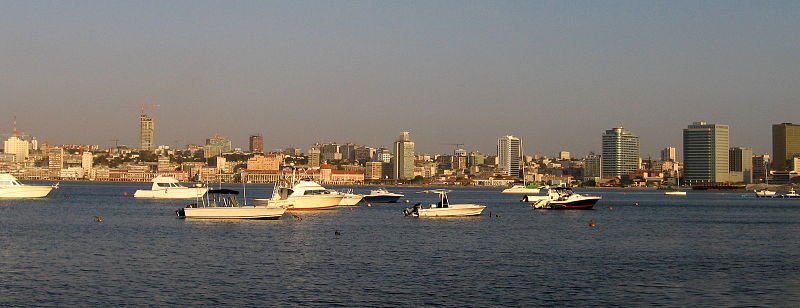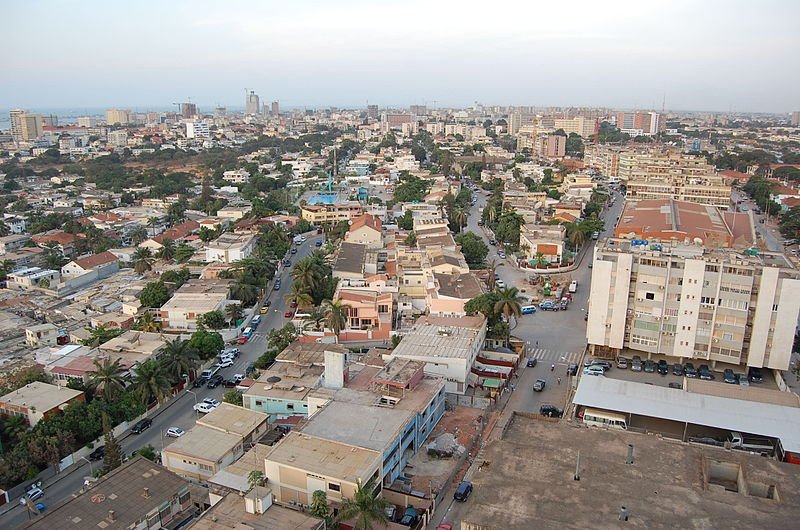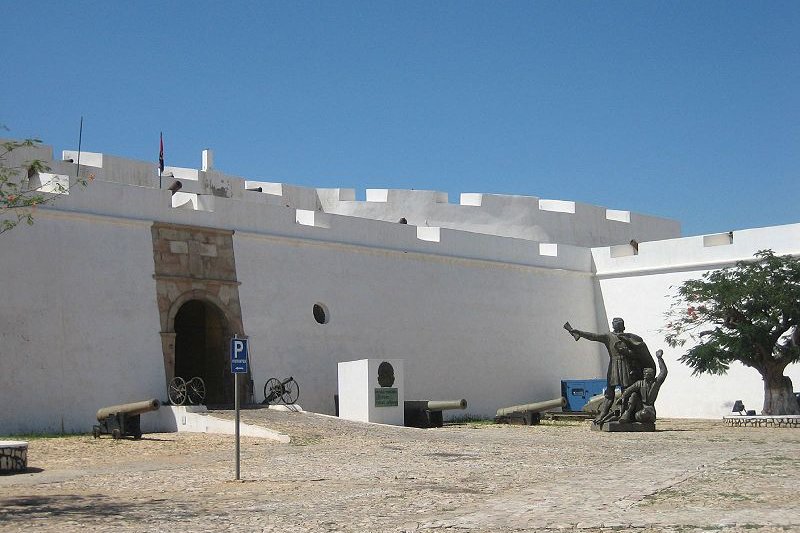
 Bay of Luanda, Luanda, Angola
Bay of Luanda, Luanda, AngolaSource: https://commons.wikimedia.org/wiki/File:Bay_of_Luanda.jpg
Author: Paulo César Santos

Luanda is the capital, chief seaport and biggest city in Angola. Formerly known as São Paulo da Assunção de Loanda, it was founded in 1575 and has a population of 5 million people. The city is also the capital of Luanda Province.
Luanda was founded by Portuguese explorer Paulo Dias de Novais on 25 January 1576. The city today bears remains of its Portuguese past, particular the early fortresses. There were three built - Fortaleza São Pedro da Barra in 1618, Fortaleza de São Miguel in 1634 and Forte de São Francisco do Penedo in 1756. Of these, Fortaleza de São Miguel is the best preserved.
 City of Luanda, Angola
City of Luanda, AngolaSource: https://commons.wikimedia.org/wiki/File:Luanda_feb09_ost07.jpg
Author: Lars Rohwer

Until the independence of Angola in 1975, the majority of Luanda's population were of Portuguese extraction. However the Carnation Revolution of 1974 and the Angolan Civil War of 1975-2002 saw a change in demographics for the city, as most of the ethnic Portuguese in the city left the country, mostly for Portugal and some for South Africa. For a number of years, the city was faced with a shortage of skilled workers. At the same time, it received an influx of refugees from the rural areas what swelled its population of unskilled labor. Slums appeared all around Luanda to house these squatters.
The end of the civil war in 2002, along with oil revenue, has translated in a building boom for Luanda and an improvement in public infrastructure. This is most apparent to those who visit the city regularly since 2002. Public transportation also improves with the recontruction of railway lines and the opening of a new international airport, scheduled for 2011.
 Fortaleza de São Miguel, Luanda
Fortaleza de São Miguel, LuandaSource: https://commons.wikimedia.org/wiki/File:Luanda-SMiguelFort2.jpg
Author: Erik Cleves Kristensen

Visiting Luanda
TAAG Angola Airlines is the national carrier of Angola. It offer flights to 15 domestic destinations as well as a number of cities in Africa including Johannesburg and Kinshasa.Places of Interest in Luanda
- Augostinho Neto Mausoleum
Mausoleum to the first President of Angola who was instrumental in fighting for the country's independence. The obelisk-shaped structure is a local landmark. - Fortaleza de São Miguel
Fortress built in 1575. It served as the administrative center for the Portuguese colonial forces, developing into a self-contained city if its own right. - Fortaleza de São Pedro da Barra
17th century fortress that was used as a defence fort as well as a detention center for slaves. - Igreja da Nazare
Church built in 1664 renowned for its Italian rose marble altar. - Igreja Nossa Senhora do Pópulo (Igreja da Sé)
Originally the cathedral of Luanda, this is also the first Anglican church in the city. - National Museum of Natural History
Museum showcasing the local wildlife from birds to mammals, fish, crustaceans and insects. - National Museum of Slavery
Housed in Capa de Casa Grande, the detention center for slaves enroute to the Americas, mostly Brazil, the museum exhibits photos and items related to the days of slavery.
 Latest updates on Penang Travel Tips
Latest updates on Penang Travel Tips
About this website

Dear visitor, thank you so much for reading this page. My name is Timothy Tye and my hobby is to find out about places, write about them and share the information with you on this website. I have been writing this site since 5 January 2003. Originally (from 2003 until 2009, the site was called AsiaExplorers. I changed the name to Penang Travel Tips in 2009, even though I describe more than just Penang but everywhere I go (I often need to tell people that "Penang Travel Tips" is not just information about Penang, but information written in Penang), especially places in Malaysia and Singapore, and in all the years since 2003, I have described over 20,000 places.
While I try my best to provide you information as accurate as I can get it to be, I do apologize for any errors and for outdated information which I am unaware. Nevertheless, I hope that what I have described here will be useful to you.
To get to know me better, do follow me on Facebook!
Copyright © 2003-2025 Timothy Tye. All Rights Reserved.

 Go Back
Go Back